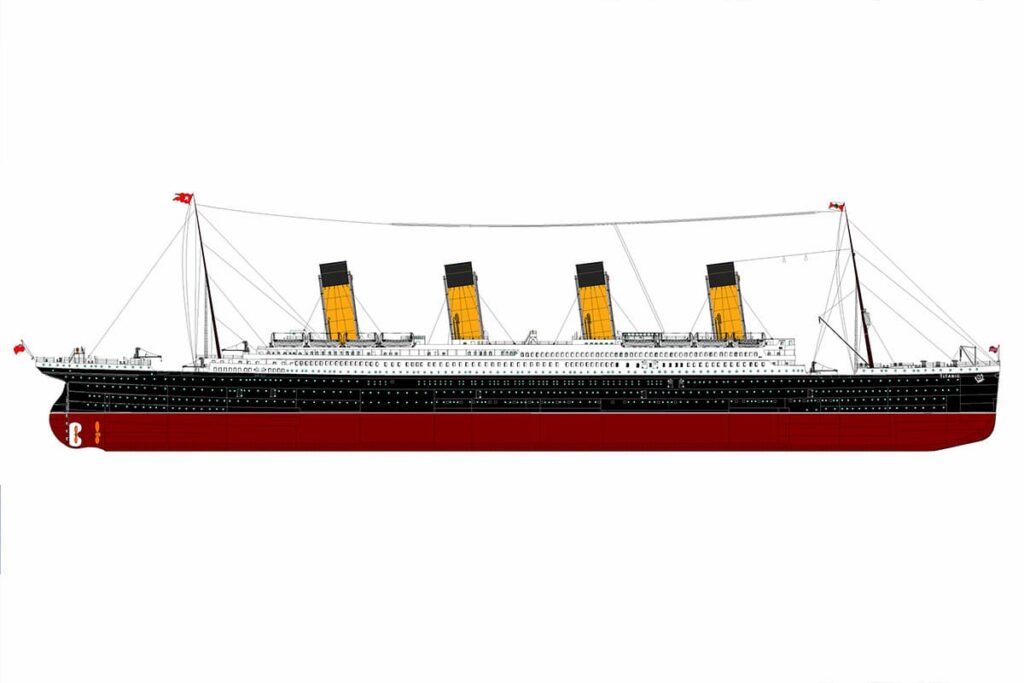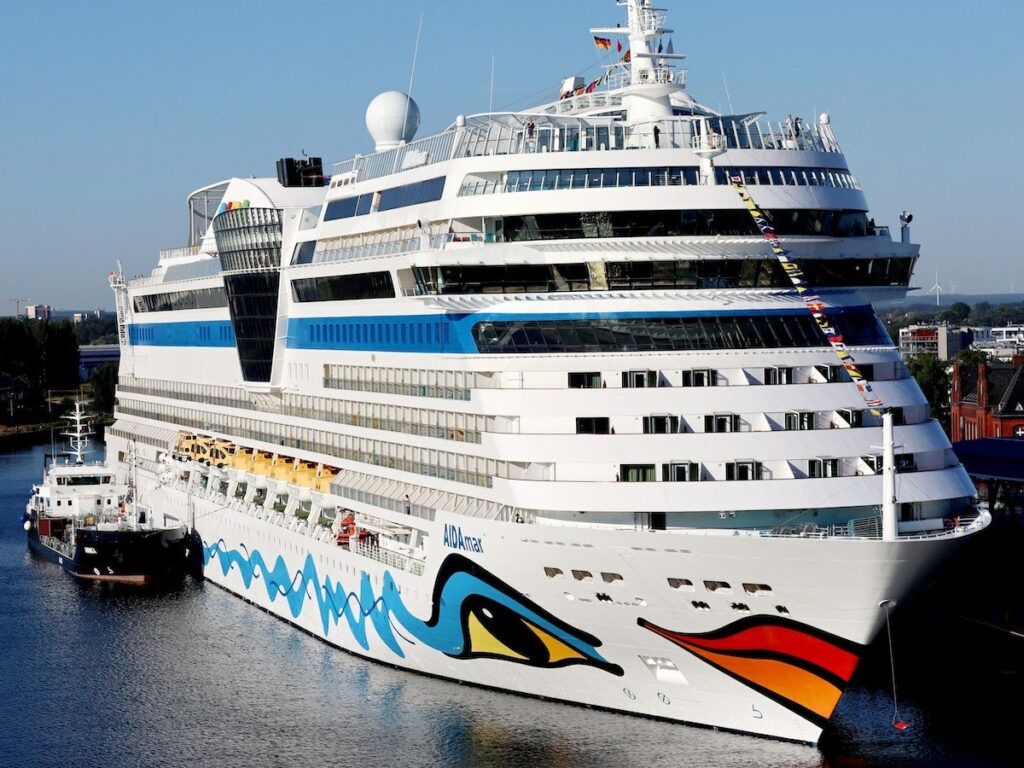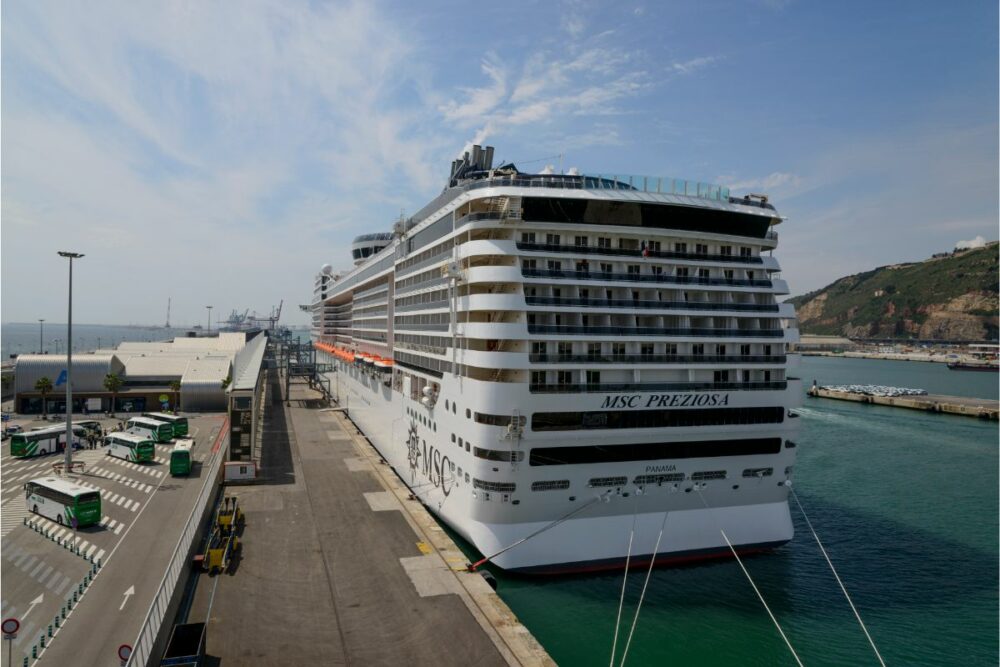The Titanic, one of the most famous ships in history, has long been a subject of fascination and comparison to modern cruise ships. While the Titanic was once considered the epitome of luxury and technological advancement, modern cruise ships have surpassed it in every way.
Today’s cruise ships are larger, more technologically advanced, and offer a wider range of amenities than ever before. One of the most significant differences between the Titanic and modern cruise ships is their size.

The Titanic was considered a massive ship in its time, but it pales in comparison to the largest modern cruise ships. These ships are not only longer and taller, but also wider, allowing for more amenities and larger cabins.
In addition, modern cruise ships are equipped with advanced technology and safety features that were not available during the time of the Titanic. Let’s compare Titanic vs modern cruise ships in more detail!
Design and Technology
Hull and Materials
Modern cruise ships are designed with advanced technology and materials, which make them much more durable and safe than the Titanic. The Titanic’s hull was made of steel plates held together with over three million rivets. However, these rivets had a high slag content, which made them prone to failure. In contrast, modern cruise ships use welding techniques that create a seamless hull, which is stronger and more resistant to damage.
Moreover, modern cruise ships use materials such as aluminum and composites, which are lighter and more durable than steel. These materials not only make the ships more fuel-efficient but also reduce their environmental impact. In contrast, the Titanic’s steel hull was heavy and required a large amount of fuel to move.
Propulsion
The propulsion systems of modern cruise ships are much more advanced than those of the Titanic. The Titanic used coal-fired engines, which produced a lot of smoke and ash. In contrast, modern cruise ships use diesel-electric engines, which are more fuel-efficient and produce less pollution.
Moreover, modern cruise ships use advanced technologies such as pod propulsion, which allows them to maneuver more easily and efficiently. These systems use electric motors that are integrated into the ship’s hull, which reduces drag and improves fuel efficiency.
Modern cruise ships are equipped with advanced navigation systems that make them much safer than the Titanic. The Titanic had limited communication capabilities and relied on visual sightings to avoid hazards. In contrast, modern cruise ships use radar, sonar, and GPS systems, which provide real-time information about the ship’s location and surroundings.
In conclusion, modern cruise ships are designed with advanced technology and materials, which make them much safer and more efficient than the Titanic. Their propulsion systems and navigation equipment are much more advanced, which reduces their environmental impact and improves maritime safety.

Safety and Emergency Features
The Titanic, built in the early 1900s, was considered a state-of-the-art ship at the time. However, its safety features and navigation systems were not as advanced as those found on modern cruise ships. The Titanic had a limited number of lifeboats, with only enough to accommodate about half of the passengers and crew on board. Additionally, the ship did not have enough life jackets for everyone on board.
The Titanic’s navigation system relied on lookouts stationed on the ship’s deck to spot obstacles and other ships. The ship did not have radar, sonar, or other modern navigation aids that are standard on modern cruise ships.
Modern cruise ships are designed with safety as a top priority. They are equipped with advanced navigation systems, including radar, sonar, and GPS, that help to ensure safe passage through even the most treacherous waters. Additionally, modern ships are equipped with state-of-the-art safety features, including fire suppression systems, watertight compartments, and lifeboats to protect passengers in an emergency.
One of the most significant safety features on modern cruise ships is the use of watertight compartments. These compartments can be sealed off in the event of a breach in the ship’s hull, helping to prevent the ship from sinking. Additionally, modern cruise ships are equipped with advanced fire suppression systems that can quickly detect and extinguish fires before they become a threat to passengers and crew.
Lessons Learned from the Titanic Disaster and their Influence on Modern Ship Design
The sinking of the Titanic was a tragic event that resulted in the loss of more than 1,500 lives. However, the lessons learned from this disaster have had a profound impact on modern ship design. Today, cruise ships are designed with safety as a top priority, with advanced safety features and navigation systems that help to ensure safe passage for passengers and crew.
One of the most significant lessons learned from the Titanic disaster was the importance of having enough lifeboats on board. Today, modern cruise ships are equipped with enough lifeboats to accommodate all passengers and crew on board, as well as additional life rafts and other emergency equipment.
Another lesson learned from the Titanic disaster was the importance of crew training and emergency preparedness. Today, cruise ships must adhere to strict regulations regarding crew training and procedures for evacuating passengers in the event of an emergency.

Accommodations and Amenities
Cabins and Suites
Modern cruise ships offer a wide range of cabin options, from basic interior staterooms to luxurious suites with private balconies and all the latest amenities. In contrast, the Titanic had only three classes of accommodations: first, second, and third class.
The first-class cabins were located on the upper decks of the ship and were the most spacious and luxurious. Second-class cabins were smaller but still comfortable, while third-class passengers had to share 10-person cabins and only had access to two shared bathrooms.
Dining and Entertainment
Modern cruise ships offer a variety of dining options, from casual buffets to gourmet restaurants with celebrity chefs. Passengers can also enjoy a range of entertainment options, such as Broadway-style shows, live music, and comedy clubs.
In contrast, the Titanic had only two main dining rooms, one for first and second class and another for third class. Entertainment options were limited to a gymnasium, a swimming pool, and a Turkish bath.
Recreation and Activities
Modern cruise ships offer a wide range of recreational activities, such as rock climbing, zip lining, and water parks. Passengers can also participate in organized activities, such as dance classes, cooking demonstrations, and wine tastings.
In contrast, the Titanic had limited recreational facilities, with a gymnasium, a swimming pool, and a Turkish bath being the only options available.
Overall, modern cruise ships offer a wider range of accommodations, dining options, and recreational activities than the Titanic. However, the Titanic’s first-class accommodations were still considered luxurious for their time and set a standard for luxury travel that still influences the industry today.
Passenger Demographics and Experience
Social Classes and Diversity
When it comes to passenger demographics, modern cruise ships have come a long way since the days of the Titanic. While the Titanic was known for its strict social classes, with first-class passengers enjoying luxurious amenities while third-class passengers were relegated to cramped quarters, modern cruise ships strive for inclusivity and diversity.
Today, passengers from all walks of life can enjoy a cruise vacation, with different types of cabins and amenities available to suit different budgets and preferences. Many cruise lines also offer specialized itineraries catering to specific interests or demographics, such as LGBTQ+ cruises, singles cruises, or family-friendly cruises.
Service and Staff
Another aspect of the passenger experience that has evolved since the days of the Titanic is the level of service provided by cruise ship staff. While the Titanic had a crew of around 900 to serve its 2,453 passengers, modern cruise ships often have a much higher staff-to-passenger ratio, with crew members trained to provide personalized service and cater to individual needs.
From housekeeping to dining to onboard entertainment, modern cruise ships offer a wide range of amenities and services designed to enhance the passenger experience. Many cruise lines also offer loyalty programs and other perks to reward repeat passengers and encourage customer loyalty.
Itinerary and Destinations
Finally, modern cruise ships offer a much wider range of itineraries and destinations than the Titanic ever could. While the Titanic’s maiden voyage was a transatlantic crossing from Southampton to New York, modern cruise ships sail to destinations all over the world, from the Caribbean to Alaska to Asia and beyond.
Cruise lines also offer a variety of shore excursions and other activities designed to give passengers a taste of local culture and attractions. From zip-lining in the rainforest to exploring ancient ruins to sampling local cuisine, there’s no shortage of things to do and see on a modern cruise vacation.
Overall, while the Titanic may have been a marvel of its time, modern cruise ships offer a much more diverse, inclusive, and personalized passenger experience. With a wide range of amenities, services, and destinations available, there’s truly something for everyone on a modern cruise vacation.
Environmental Impact and Sustainability
Titanic’s environmental impact and fuel efficiency
As a ship built in the early 1900s, the Titanic was not designed with environmental impact in mind. Its coal-fired engines emitted significant amounts of greenhouse gases and other pollutants. In addition, the ship’s fuel efficiency was relatively low, requiring large amounts of coal to be burned to power the vessel.
Modern cruise ship environmental efforts
In recent years, the cruise industry has made significant efforts to reduce its environmental impact. Many modern cruise ships are equipped with advanced waste management systems, which allow for the safe and efficient disposal of waste products. In addition, many ships are now powered by cleaner-burning fuels, such as liquefied natural gas (LNG) or marine gas oil (MGO). These fuels produce significantly fewer greenhouse gas emissions and other harmful pollutants than traditional fossil fuels.
Comparison of the environmental impact of the Titanic and modern cruise ships
When comparing the environmental impact of the Titanic and modern cruise ships, it is clear that significant progress has been made in recent years. While the Titanic was a technological marvel for its time, it was not designed with environmental sustainability in mind.
In contrast, modern cruise ships are equipped with advanced technologies that allow for the safe and efficient disposal of waste products, as well as cleaner-burning fuels that produce fewer greenhouse gas emissions and other pollutants.
Overall, while the cruise industry still has room for improvement when it comes to environmental sustainability, it is clear that significant progress has been made in recent years. By continuing to invest in new technologies and sustainable practices, the industry can work towards a more sustainable future for both passengers and the environment.
- Sustainable and Luxurious: Discovering Split’s Yachting Paradise – April 26, 2024
- MarineTraffic vs VesselFinder: Which Is Better Vessel Tracking Service? – February 14, 2024
- Port Costs: A Comprehensive Guide to Port Dues and Fees for Cargo Ships – February 12, 2024





Leave a Reply